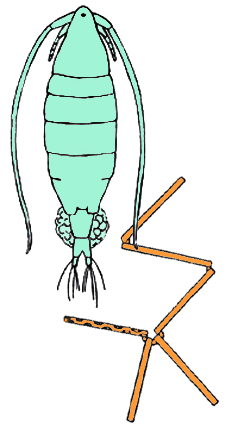Last week I took a field trip to the Dutch Kills tributary of Newtown Creek with Drs. Michael Levandowsky and Sarah Durand to sample plankton. Sarah is a fixture on Dutch Kills, and is currently enjoying her sabbatical from LaGuardia Community College (although sabbaticals do tend to become as full of responsibility as ever, I am learning), located steps from the infamous Superfund site. She and her colleague Dr. Holly Porter-Morgan, the director of the environmental science program at LaGuardia, have regularly brought their classes out to sample water and benthos on the creek, and are the resident scientists of Newtown Creek. Michael I have introduced already.
Finding a time for all three of us to get together on my favorite underdog waterbody was something I had been looking forward to for awhile.

Michael on plankton and Sarah on dissolved oxygen.
Despite popular opinion, Newtown Creek is alive. I would never use adjectives such as “clean”, “pathogen-free” or “high-functioning”, but I can state with some authority that Newtown Creek is surprizingly alive. The ecosystem that exists today in the backyard of the Industrial Revolution is what one might call “impaired”, hamstrung by historic contamination and persistent sewer overflows, but it limps along (and occasionally leaps!) nonetheless.
Dutch Kills has always been fascinating to me, as it lies on a transitional borderline between the relatively good water quality at the mouth of Newtown Creek, and the “heart of darkness” further up. There is a large CSO that functions as the headwaters, and the entire tributary might suddenly turn a milky mint green, precipitate gloopy green algae blobs, and then turn a tea-like red the next day. She moves in mysterious ways.
Sarah hosted our dip, and allowed us to take a preliminary look at our findings back at the lab. We used two different tows, one of coarser and one of finer mesh. This is what we saw in the coarser mesh:

Clockwise from top left: Possibly a freshwater alga, a barnacle larva, something of botanical origin that stumped us, and a skeletonema.
Michael made off with an aliquot of the fine mesh sample and reported… “I looked at the sample from the 10 um tow and it’s rich in phytoplankton. Skeletonema dominates, but there are also dinoflagellates, and much else.”
More will be revealed!

Leave a Reply